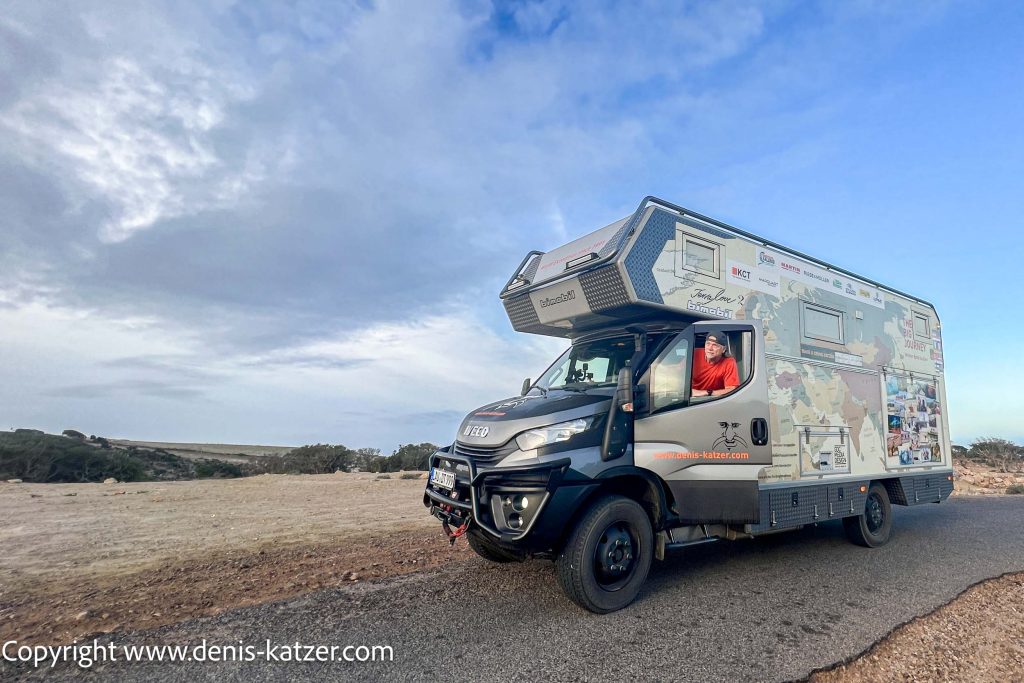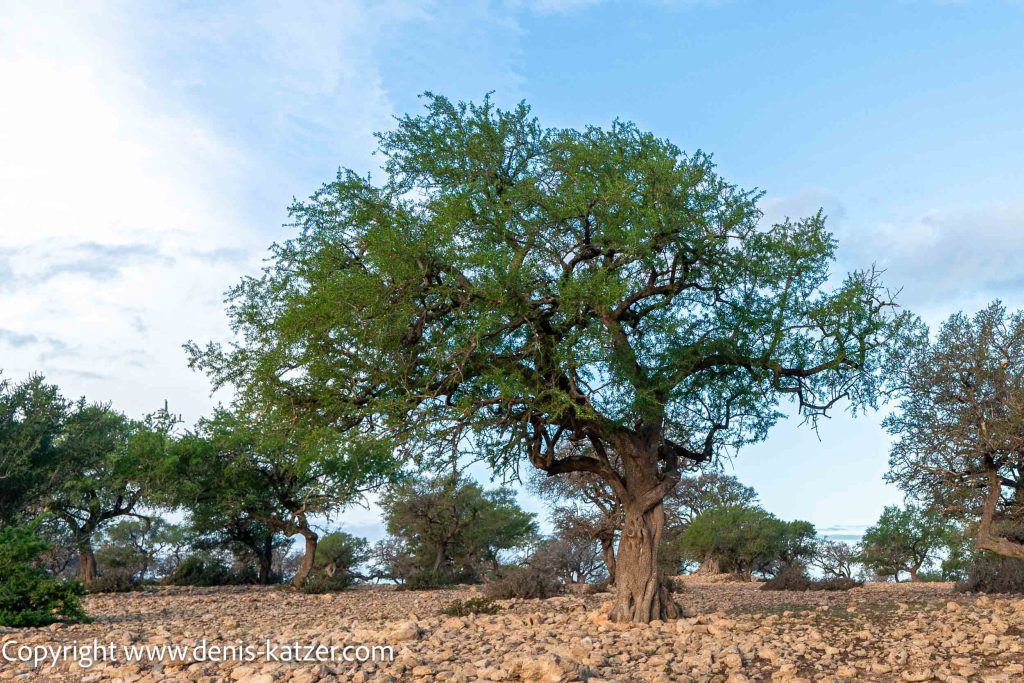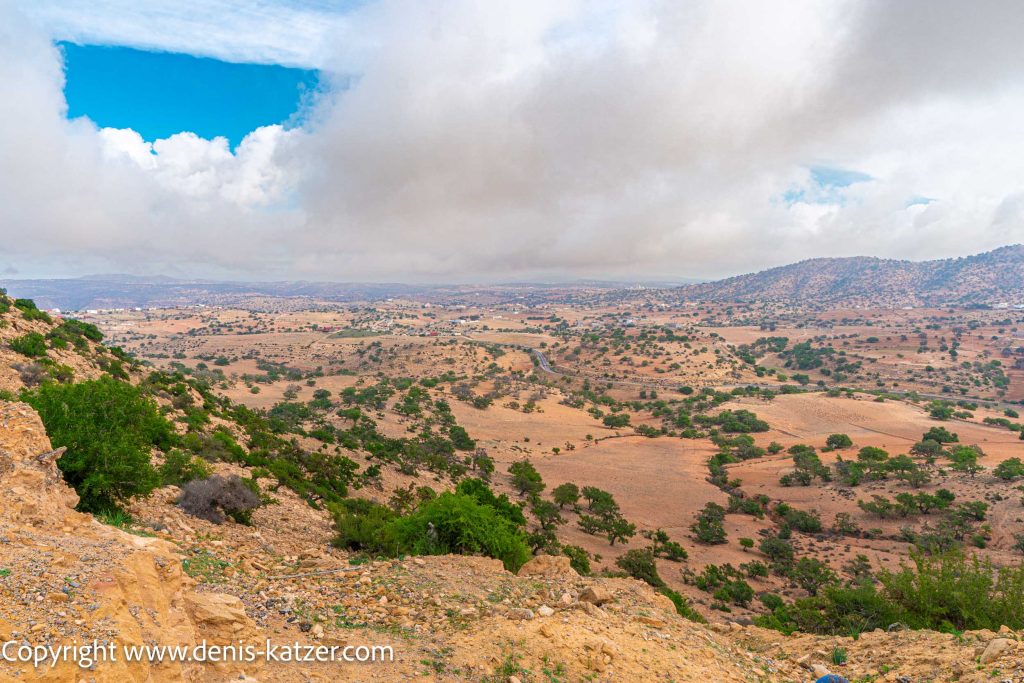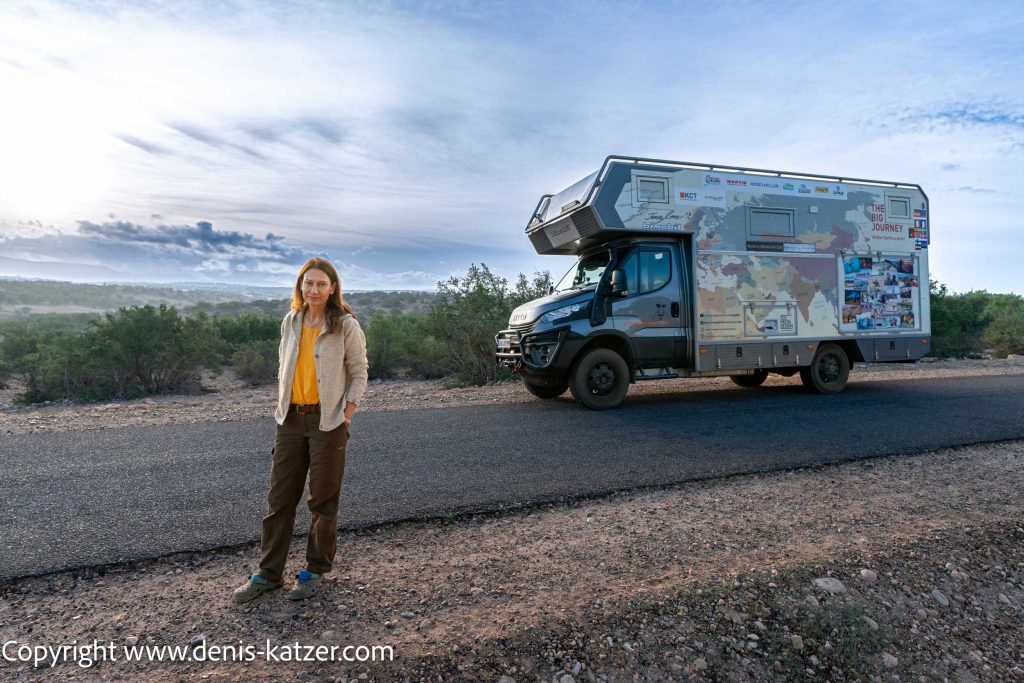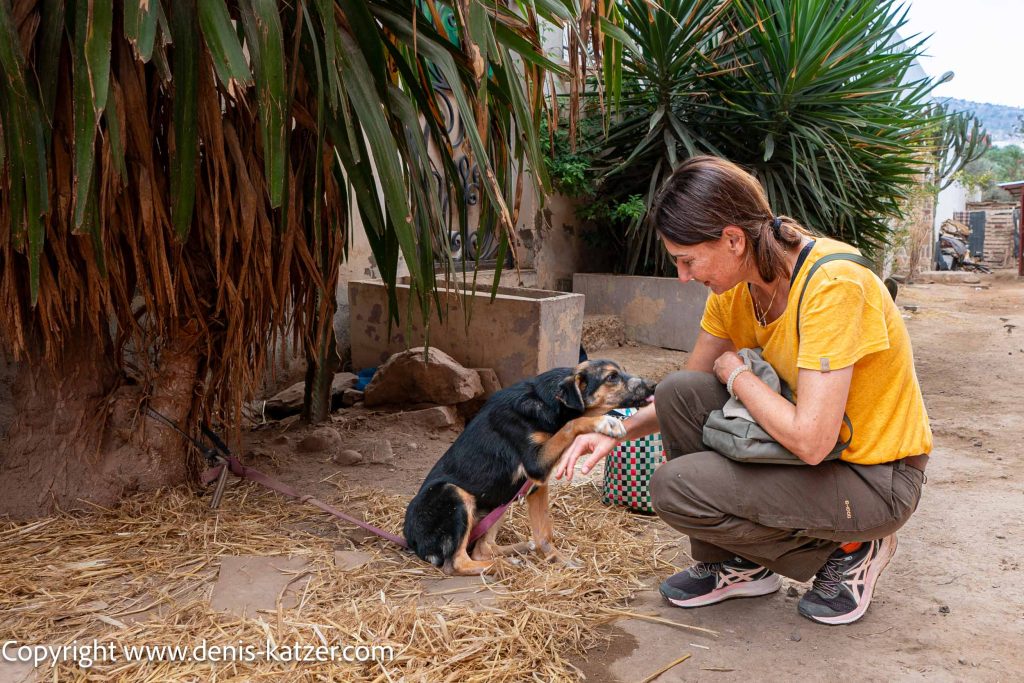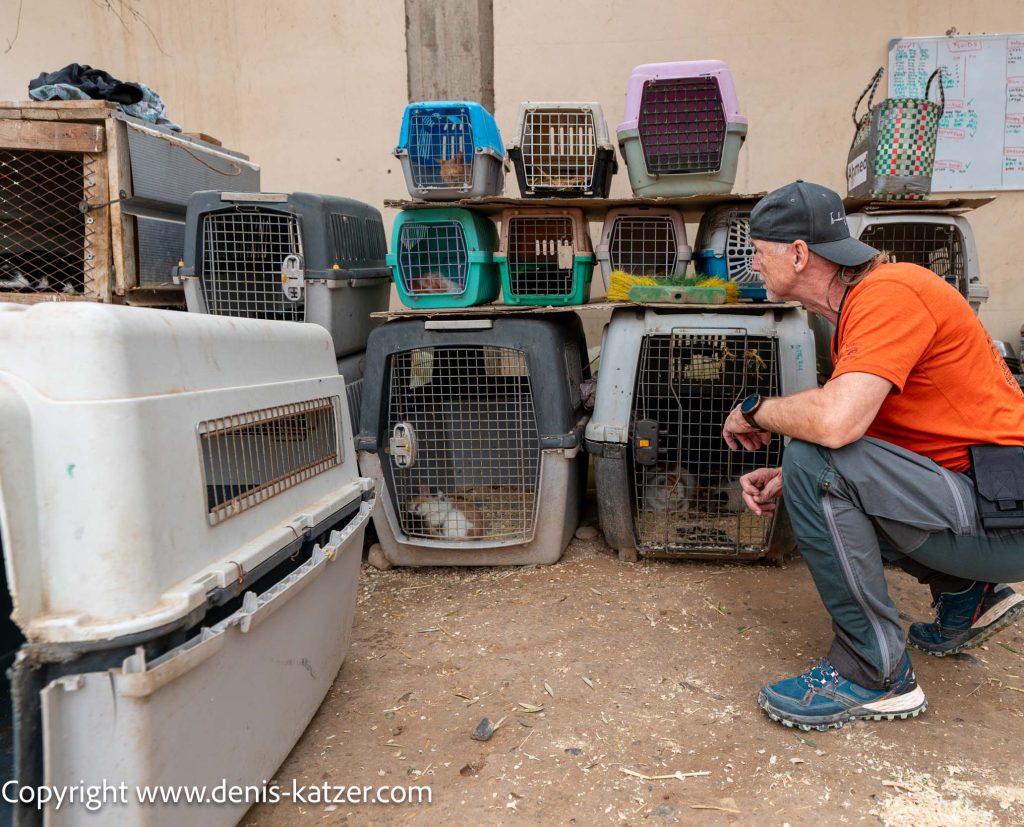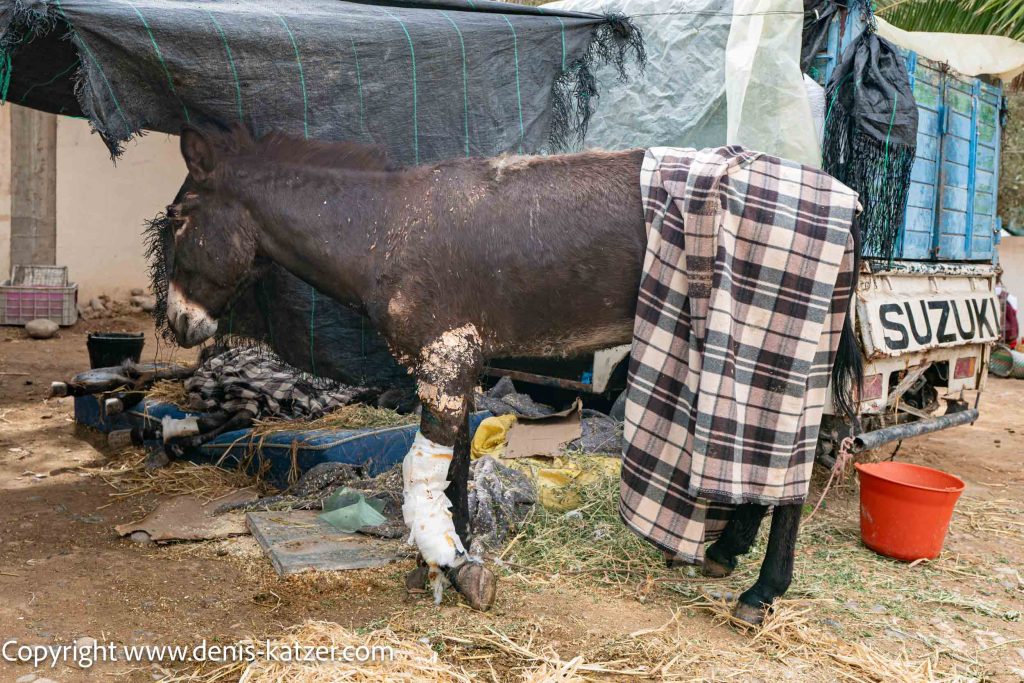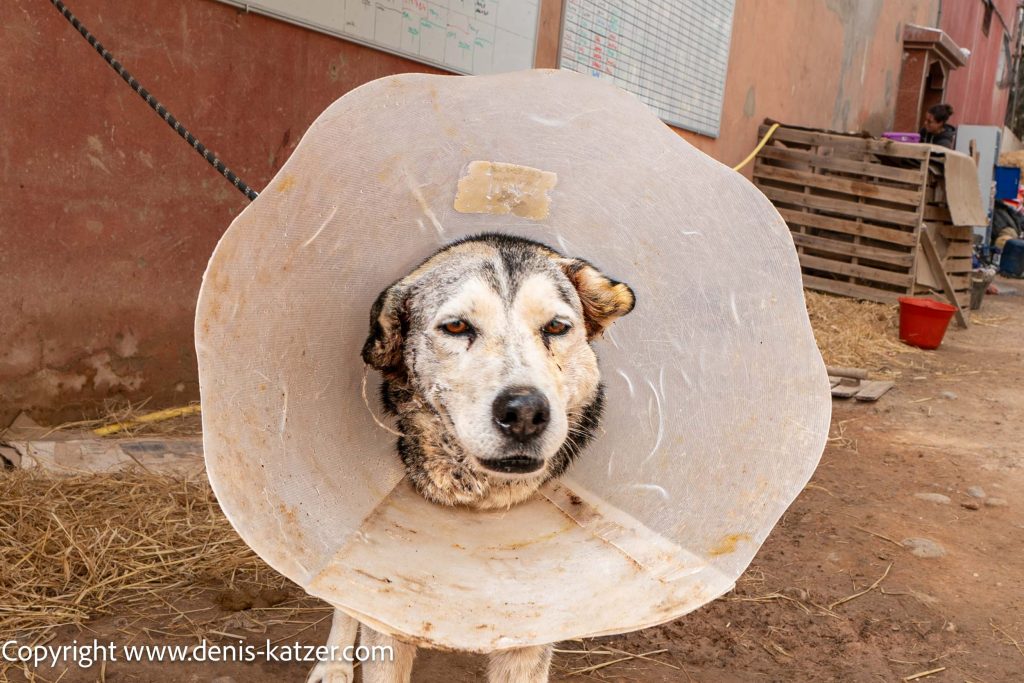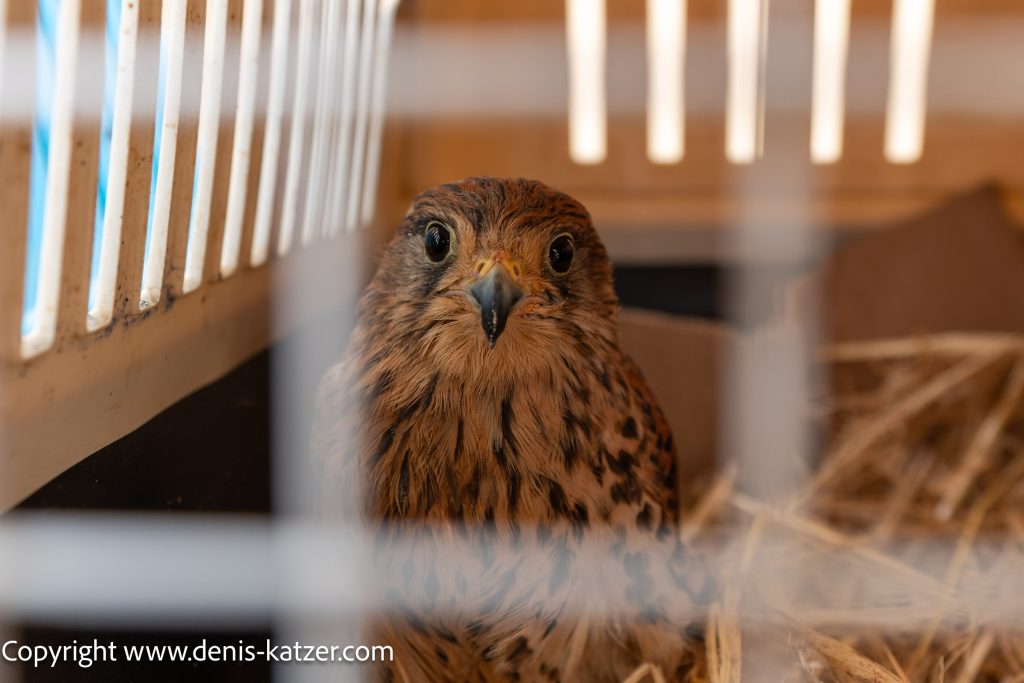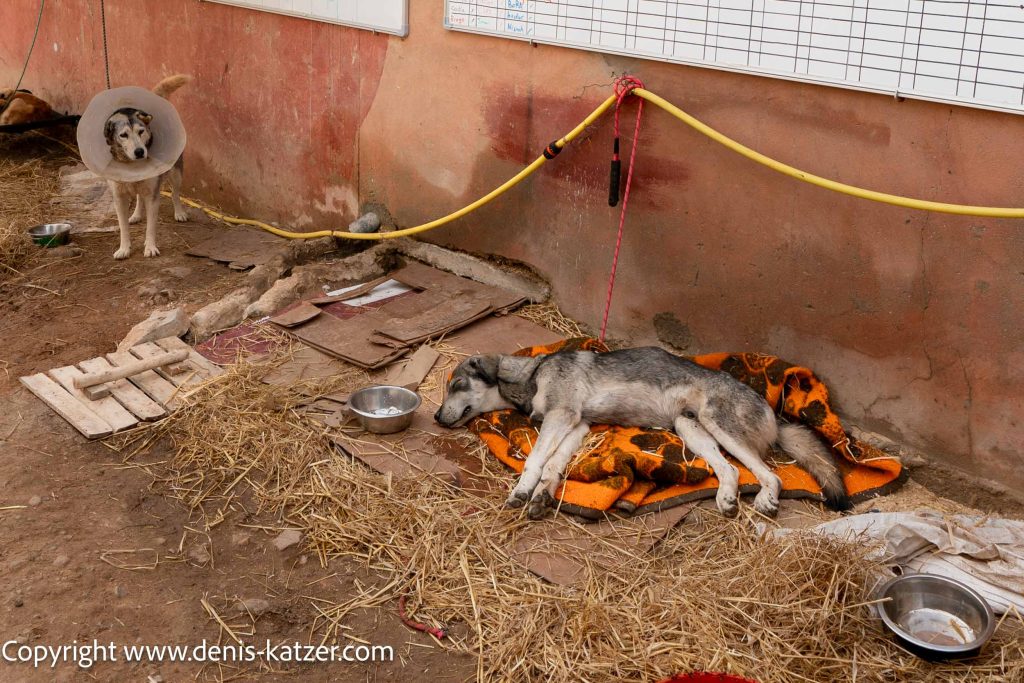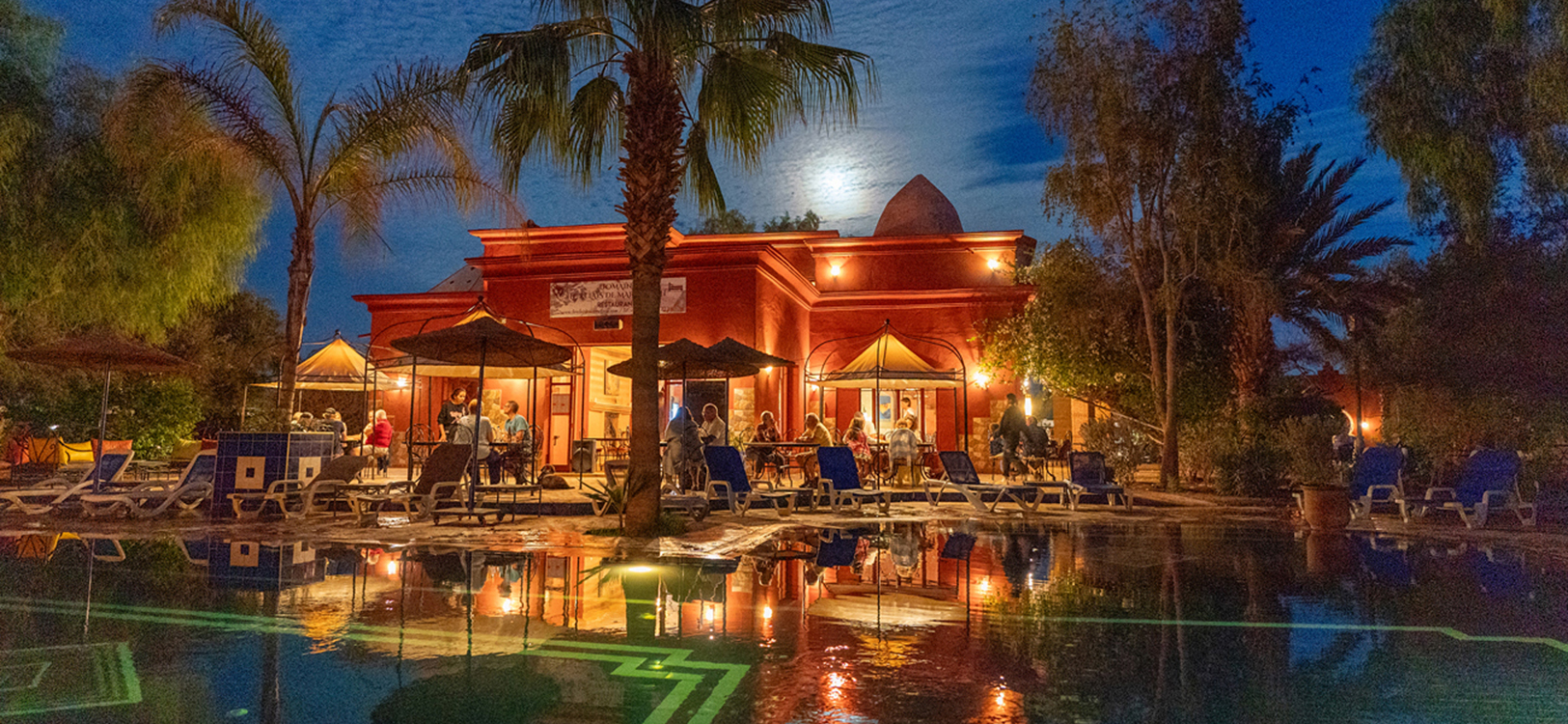
Towards Agadir – Visit to the animal organization Animal Aid – Threatened by eviction
N 30°23'40.9" W 009°34'56.4"
Day: 366 – 368
Camp: 66
Country: Morocco
Location: Agadir at the Carrefour supermarket
Latitude N: 30°23’40.9″
Longitude W: 009°34’56.4″
Daily kilometers: 199 km
Total kilometers: 8408 km
Temperature day max: 22°
Night temperature: 14 °
After our unforgettable stay in the fishing town of Essaouira, we continue our journey south. As we found it difficult to tear ourselves away from the romantic place, it was getting late and already pitch dark.
Due to potholes, unexpected bumps, sometimes lack of or inadequate lighting and the sudden presence of camels, donkeys, goats and sheep on the highway, as well as some speeding locals, it is advisable to avoid driving at night in Morocco.
However, the short distance from Essaouira to the charming beach town of Sidi Kaouki, around 25 kilometers to the south, is comparatively safe. We still have the opportunity to stay at a cozy campsite there today.
We reach Sidi Kaouki Beach Camping at 9:30 pm. It doesn’t take long for the friendly night watchman to open the iron gate for us. With a smile, he says: “Choose a place you like. We don’t have many guests at the moment.”
While Tanja registers our passports with the campsite warden, I feel my way through the dark area and find a suitable place for us to spend the next two nights.
There is a particularly relaxed atmosphere in the small village of Sidi Kaouki. In winter, windsurfers and kitesurfers gather here on the waves of the Atlantic, while in the evening they meet in the cozy restaurants. We take a walk along the extensive, seemingly endless sandy beach, feel the wind in our hair and enjoy the scent of the spicy, salty sea air, which we inhale deep into our lungs.
Because our Moroccan visa expires in a few days, we have to leave the country. We therefore leave Sidi Kaouki behind us after just one day and initially follow the mostly single-lane P2201 country road, which winds its way through an impressive hilly landscape along the Atlantic. We continue towards the sun, which only a few minutes ago climbed over a mountain ridge and is covered by a diffuse wall of cloud, the reason why the morning is still relatively cool.
Camels:
Suddenly, dromedaries appear in front of us, feeding on the green bushes and trees at the side of the road. The further south we go, the more often we come across these wonderful animals, with whom Tanja and I have spent six years and covered 12,000 kilometers on previous expeditions.
There are still many free-roaming camels in Morocco, especially in desert areas such as the Sahara and the semi-desert regions in the interior of the country. They often belong to nomadic communities or Bedouins.
Perhaps a brief explanation:
Dromedaries are a type of camel, but often the term ‘camel’ is used informally for both types. If a clear distinction is necessary, ‘dromedary’ is used for one-humped camels and ‘Bactrian camel’ for two-humped camels.”
Our destination today is Morocco Animal Aid, in the small Berber village of Assersif, about 30 minutes south-east of Agadir.
After our dog Ajaci died in Morocco a few months ago and we still have a lot of expensive medication for him, Tanja suggested that we visit the animal rights activists from Animal Aid and donate the medication to them, which is often difficult to obtain in Morocco.
During our journey, we stop occasionally to take a few photos or video recordings of the beautiful landscape. There are wild dogs living at some of the parking and rest areas, and as soon as we leave our Terra Love, they run up wagging their tails and asking for something to eat with a friendly smile. Due to the unexpected early death of our white shepherd Ajaci, the storage space of our expedition vehicle is still filled with dog food. In this way, we can help to alleviate their hunger a little.
The landscape remains impressive as we continue our journey. Mountains rise majestically in front of us, while the Sahara seems to spread out in the distance. The road leads us over stony land, through valleys and over mountain ranges. Then the narrow P2202 ends and joins the well-developed National Road 1.
The picturesque Atlantic coast of Morocco passes by, and the rocky cliffs and sandy bays offer breathtaking views of the ocean. On the beaches along the route, such as Taghazout Beach, Tamri Beach and Imi Ouaddar Beach, the gentle waves invite you to linger and relax. However, as we still have a few thousand kilometers to go to the Moroccan border, we are content for the time being with the view of the passing landscape and charming fishing villages, where we catch brief glimpses of the traditional life of the inhabitants.
Visit of the animal organization Animal Aid – Threatened by eviction!
We reach the small Berber village of Assersif. On the main road we discover the animal aid organization Morocco Animal Aid.
The manager Mohammed welcomes us in a very friendly manner and shows us around the animal welfare center. “Do you want us to explain how to use the medication or are you already familiar with it?” I ask. “You’re welcome to explain it to me, but I already know most of them,” Mohammed replies. “It’s like gold. It’s hard to get and expensive. It is extremely effective in treating the parasitic skin disease mange or scabies, which is common in dogs. It’s caused by mites,” he explains, holding a box of the medicine in his hands. “It works like a miracle cure,” he adds, smiling warmly at us.
“We hope to motivate you out there to visit this place and support the people and their wonderful and important work,” Tanja says into the camera as I film her.
“And what exactly is the name of your organization?” I ask, to make sure that those who want to can find their way here. “Morocco Animal Aid,” answers Mohammed.
“And you live exclusively from donations?” “Yes, we pay our helpers a salary that is generated from donations. “That’s how our organization works. We don’t get any support from the government. However, people from all over the world support us with money or donations in kind. I would like to take this opportunity to thank you once again – the medicines are a real blessing for us.”
“How did it come about that you became the manager of an animal welfare organization?” I want to know. “I’ve been here for three years. But it all started next to my village. There is a branch of the organization there. I started there because I like animals, and now it’s a full-time job.”
“Do you get the donations from many countries?” I ask again. “Yes, mainly from Europe and America,” answers Mohamed.
After the interview with the likeable young man, we explore the animal welfare center and film the animals and people who work here. We discover a donkey whose left front leg is bandaged. The Australian Lucy, who has been working for the endangered street animals in Morocco for 12 years and founded Animal Aid, explains to us that the donkey named Lisa has to be put down. She explains that Lisa’s foot has no chance of healing because gravity pulls the lower part of the foot downwards and therefore the gap between the fractures cannot heal. “She has to be put to sleep,” we hear Lucy’s sad voice.
Epilogue:
Shortly after our visit, the police arrived at Animal Aid to clear the place and close the organization. All dogs should be killed or taken away. According to reports, even a neighbor became violent and destroyed parts of the facility under the eyes of the police. It is claimed that this was the same man who had poisoned animals some time ago.
The people and helpers of the organization have tried to fight back and have remained steadfast. They have a valid tenancy agreement for the property and may not be legally evicted from their home. Now they are forced to defend their rights and the protection of animals in need of help with lawyers.
They have long been looking for a suitable place far away from human settlements so as not to disturb anyone. There is enough space, but they have not yet received a lease from the local authorities.
For us, it is always terrible to see that we humans do not grant our animal partners on this beautiful planet any rights, even in the year 2024, and refer to animals as commodities and often treat them accordingly. As if animals have no feelings and a right to a life appropriate to their species.
I wonder how much longer it will take,
until that changes?
We ask you, dear readers, to support Animal Aid:
Visit her on Instagram.
Possibly share a post.
Or visit the Animal Aid website and find out how you can donate food, medicine or money.
Thank you very much
Here is the link to the Morocco Animal Aid website
Watch the video and read the text to get an insight into what it looks like there.
Here is the link to the video:
